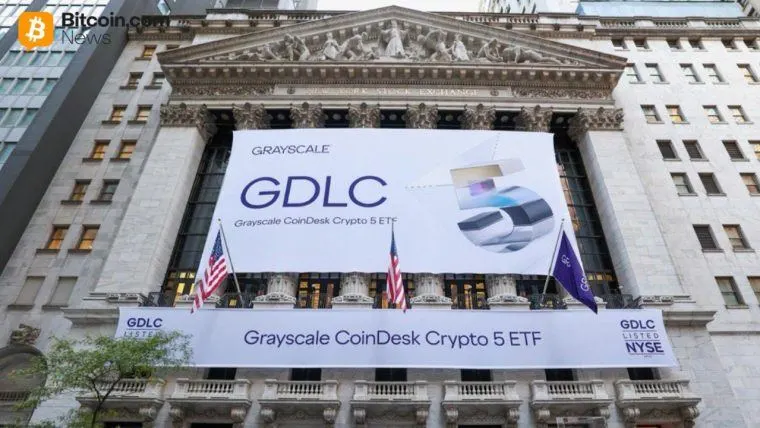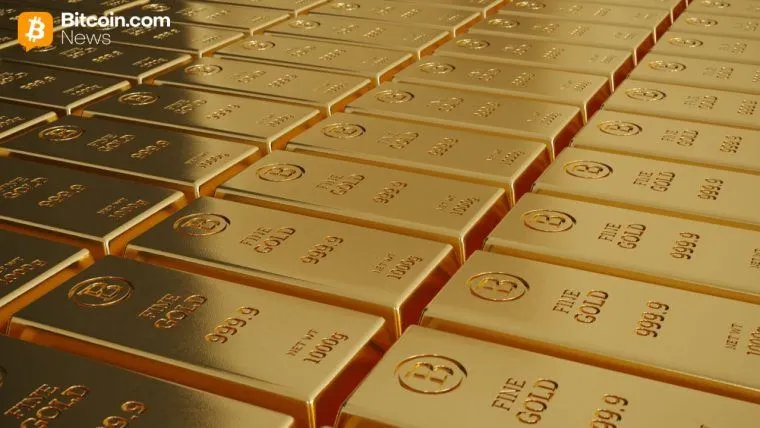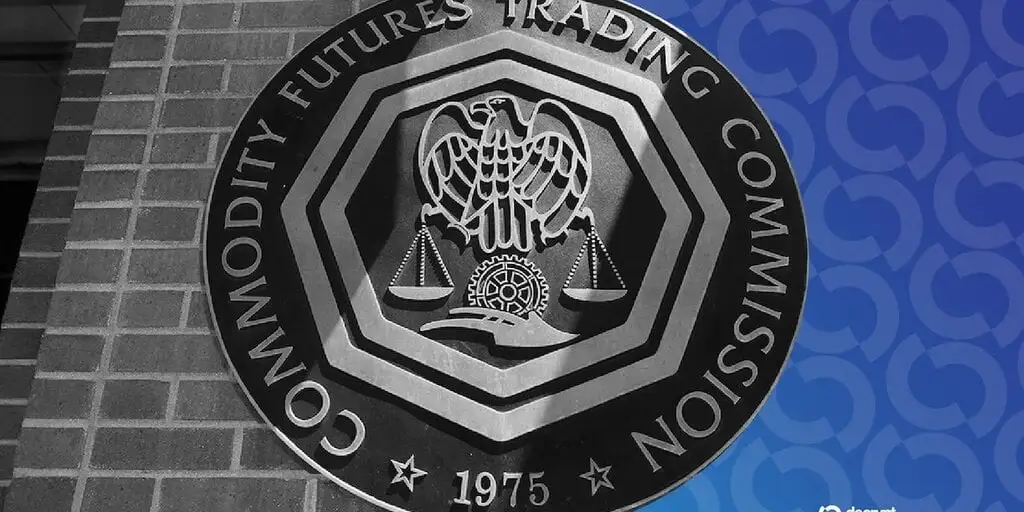The race is on, and $5,000 is the finish line. But which asset gets there first—gold or Ethereum?
On Myriad, the prediction market built by Decrypt's parent company Dastan, traders have placed their bets: 65.5% of the money is on ETH reaching $5,000 before gold does.
It's a bold call considering gold, trading for $4,115 today, is closer to the target, despite registering its biggest one-day correction in over a decade. But the technical analysis reveals why crypto traders might be onto something—and why they could be spectacularly wrong.
Ethereum (ETH) price: Compression before explosion?
Ethereum closed yesterday at $3,892, down 2.3% after touching an intraday high of $4,112. It's currently trading hands for around $3,900. The weekly chart shows ETH consolidating in what appears to be a classic compression pattern, with all major technical indicators still weakly bullish.
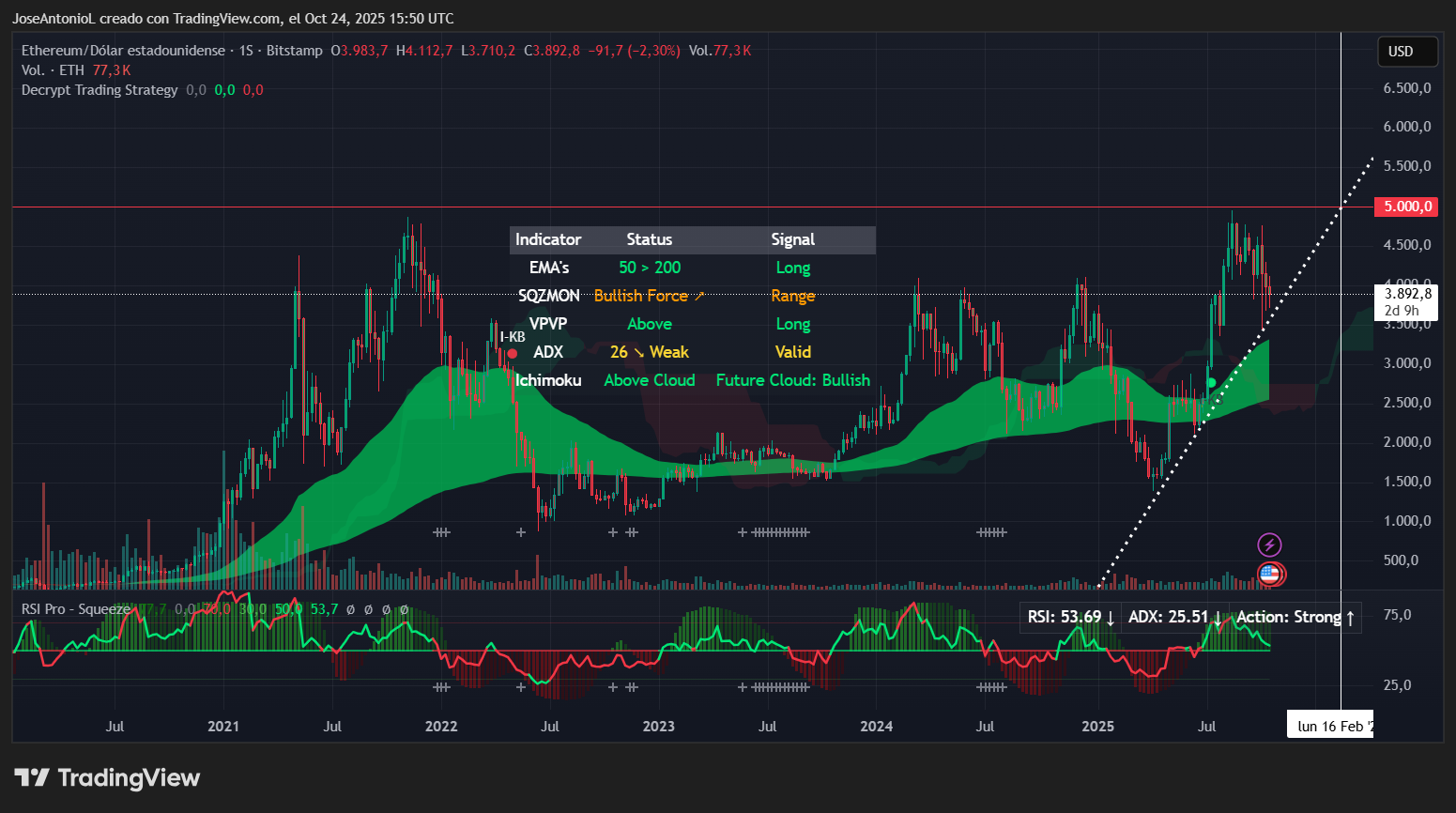
Ethereum price data. Image: Tradingview
The average price of the last 50 weeks (roughly a year, and otherwise known to traders as the EMA 50) sits above the average price of the last 200 weeks (EMA 200, roughly what’s considered a full crypto market cycle) with those moving averages acting like dynamic support levels. When the faster EMA crosses above the slower EMA (shorter term above the longer term), it means traders expect the overall market movement is bullish in the long run.
The Average Directional Index, or ADX, reads 25.51, just above the critical 25 threshold. ADX measures trend strength regardless of direction—above 25 means there's an actual trend in place, not just random noise. This reading shows a valid but weakening trend. It's not screaming momentum, but it's enough to suggest the bulls still have some gas in the tank.
The Relative Strength Index, or RSI, sits at 53.69, dead center in neutral territory. RSI measures overbought and oversold conditions on a scale of 0-100. Above 70 generally triggers profit-taking from traders; below 30 attracts bargain hunters. At 53, ETH is neither extended nor oversold—it's in that Goldilocks zone where either direction remains possible.
In terms of supports and resistances, looking at the broader picture, there are at least two scenarios to consider.
The optimistic one shows that ETH is in a short correction respecting the pattern of higher lows since April 2025. If valid, this support line (dotted white in the chart above) takes ETH to $5K at least by Feb 2026.
There is also a pessimistic one that shows ETH in a multi-year horizontal channel, with the coin bouncing after hitting a resistance near the $5K line. If this is the scenario, the short-term dotted line is invalidated and ETH could correct all the way down to around $2K through next year (which is also expected to be a crypto winter if history repeats itself).
Gold vs. Ethereum: The market cap reality check
Here's where the prediction market gets interesting. Ethereum needs a 30% gain to reach $5,000. Gold needs only 20%. Simple math says gold has the shorter distance to run—but simple math doesn't account for market dynamics.
Gold's market capitalization is approximately $28 trillion. Ethereum's? A bit less than $500 billion. That's a 56x difference. Moving gold's price requires massive capital inflows because you're pushing against the weight of the world's largest store of value. Central banks, institutions, and sovereign wealth funds don't move quickly.
Ethereum can spike 20% in two weeks on a burst of retail enthusiasm and institutional FOMO—exactly what happened between August 4-11 when ETH jumped from around $3,200 to $3,850. Gold's last 20% move? That took three months, grinding from July through October before this week's correction.
Consider the long-term trajectories: Gold has been consistently bullish since 2016, compounding roughly 350% over nine years. Slow, steady, institutional-grade gains.
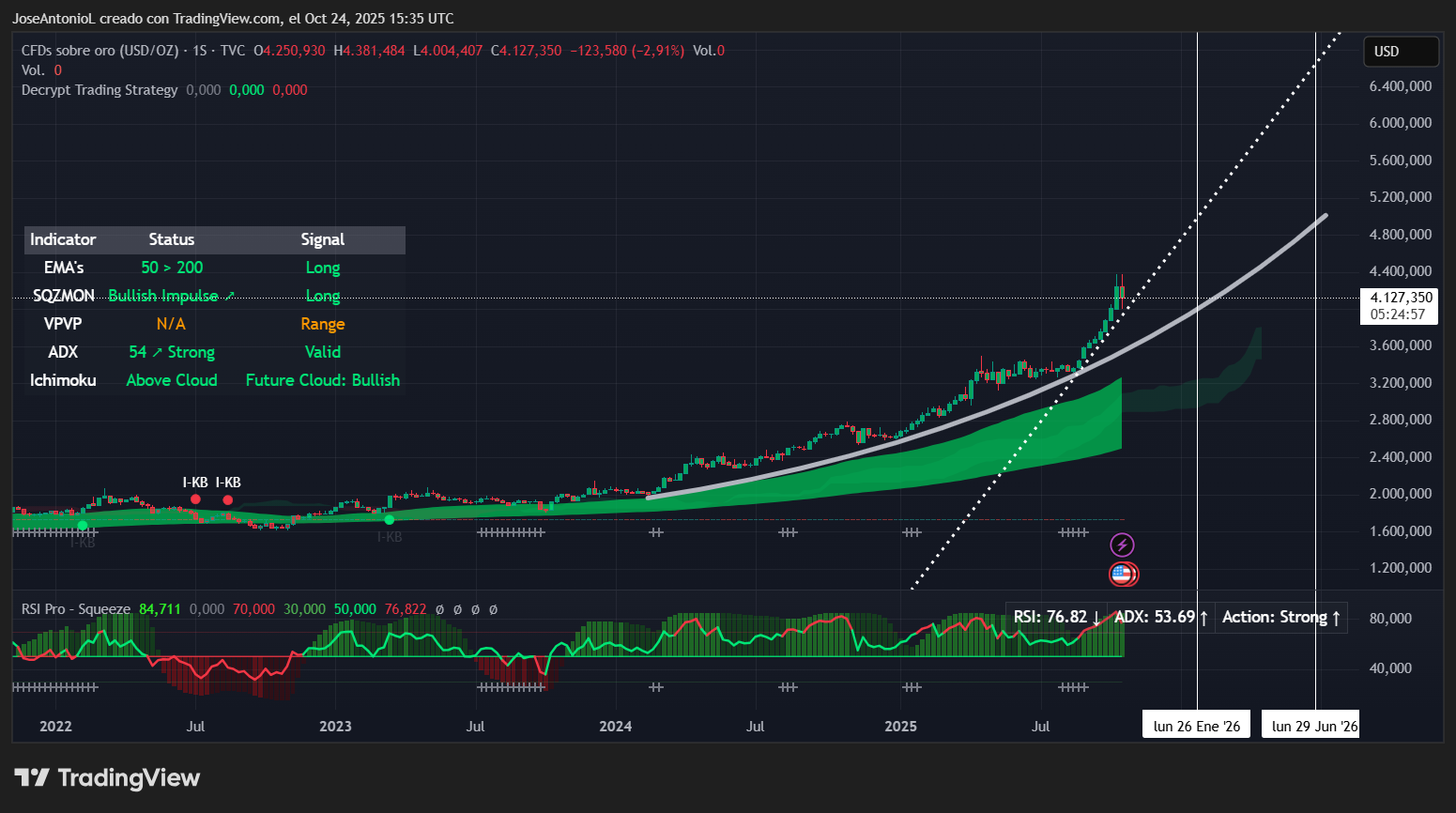
Ethereum price data. Image: Tradingview
Ethereum? It's lost 80% of its value twice during crypto winters in 2018 and 2022. But after each recovery, it exploded—up 3,000% from the 2020 lows to its 2021 peak. The volatility cuts both ways.
Gold is the world's reserve store of value. During market crises, gold doesn't crash—it often rallies as investors flee to safety. The 2008 financial crisis, the 2020 pandemic, geopolitical tensions—gold thrives on uncertainty. With Ethereum, crypto winters are real.
In terms of projections, if markets remain overall bullish, ETH is projected to reach $5K early next year. Gold looks more solidly bullish with slower but steadier movements. If the most optimistic support is respected, it should be neck and neck with Ethereum on its way to $5K (dotted white line). If it cools down and maintains its multi-year movement it could reach that mark by mid-2026 (solid curved line).
Speed vs. certainty
This one is a tough call for predictors, no doubt, because gold requires more than just technical analysis. And the nature of the crypto market has changed a lot in the last two years, which has probably impacted the historical pattern of three bullish years for every major bearish one.
Ethereum could hit $5,000 faster—potentially in 4-8 weeks if the bullish setup resolves upward. The 30% move is within ETH's normal volatility range, and the compression pattern suggests a big move is coming. With Myriad traders placing 69.2% odds on ETH pumping to $4,500 (just 15% below the $5,000 target), there's clear conviction in the near-term bullish case.
But there's a critical "if" in that statement. If macro conditions hold. If crypto doesn't face a sudden regulatory shock. If Bitcoin maintains support above $100,000. If risk appetite doesn't collapse as crypto winter fears grow.
Gold is more likely to eventually reach $5,000—but it might take months. The 20% move requires mobilizing billions in capital.
The Myriad market showing 65.5% odds on ETH is essentially betting on speed over certainty. It's betting that ETH's lower market cap and higher volatility allow it to sprint to $5,000 before gold's institutional pace gets there. The technical indicators support this thesis—ETH is compressed and ready to move, while gold just had its biggest single-day correction in a decade and might need time to consolidate.
The views and opinions expressed by the author are for informational purposes only and do not constitute financial, investment, or other advice.
免责声明:本文章仅代表作者个人观点,不代表本平台的立场和观点。本文章仅供信息分享,不构成对任何人的任何投资建议。用户与作者之间的任何争议,与本平台无关。如网页中刊载的文章或图片涉及侵权,请提供相关的权利证明和身份证明发送邮件到support@aicoin.com,本平台相关工作人员将会进行核查。
